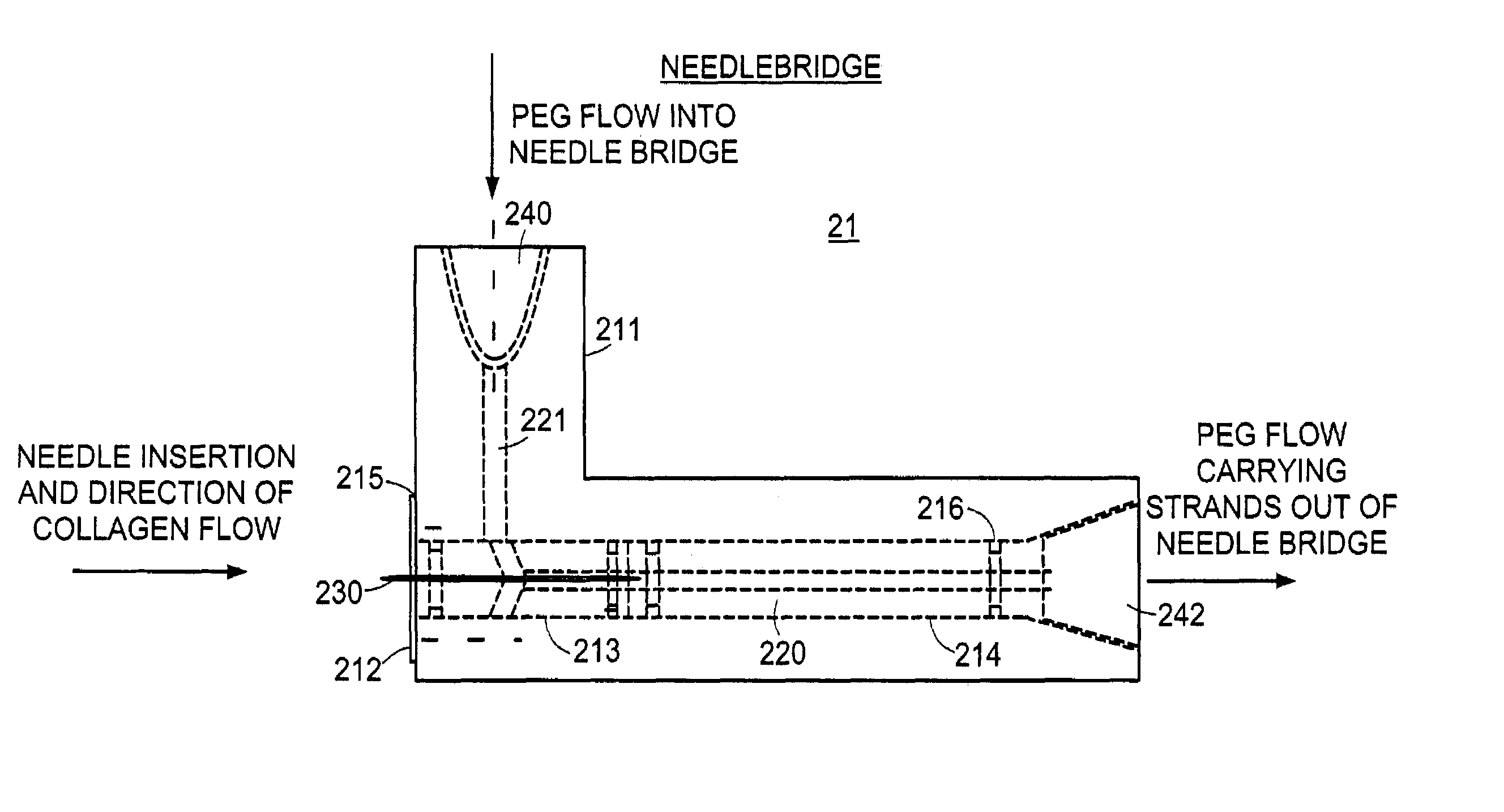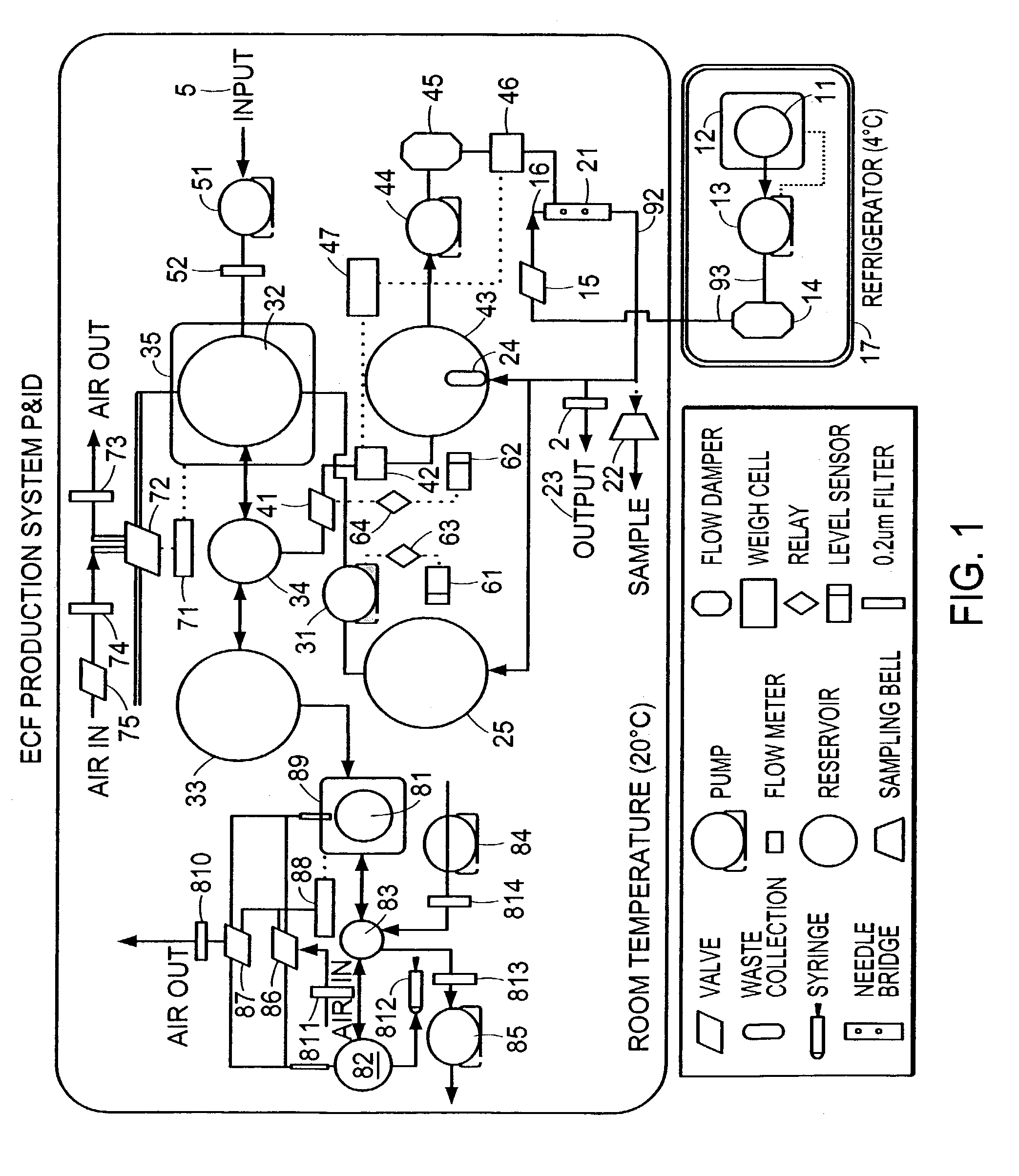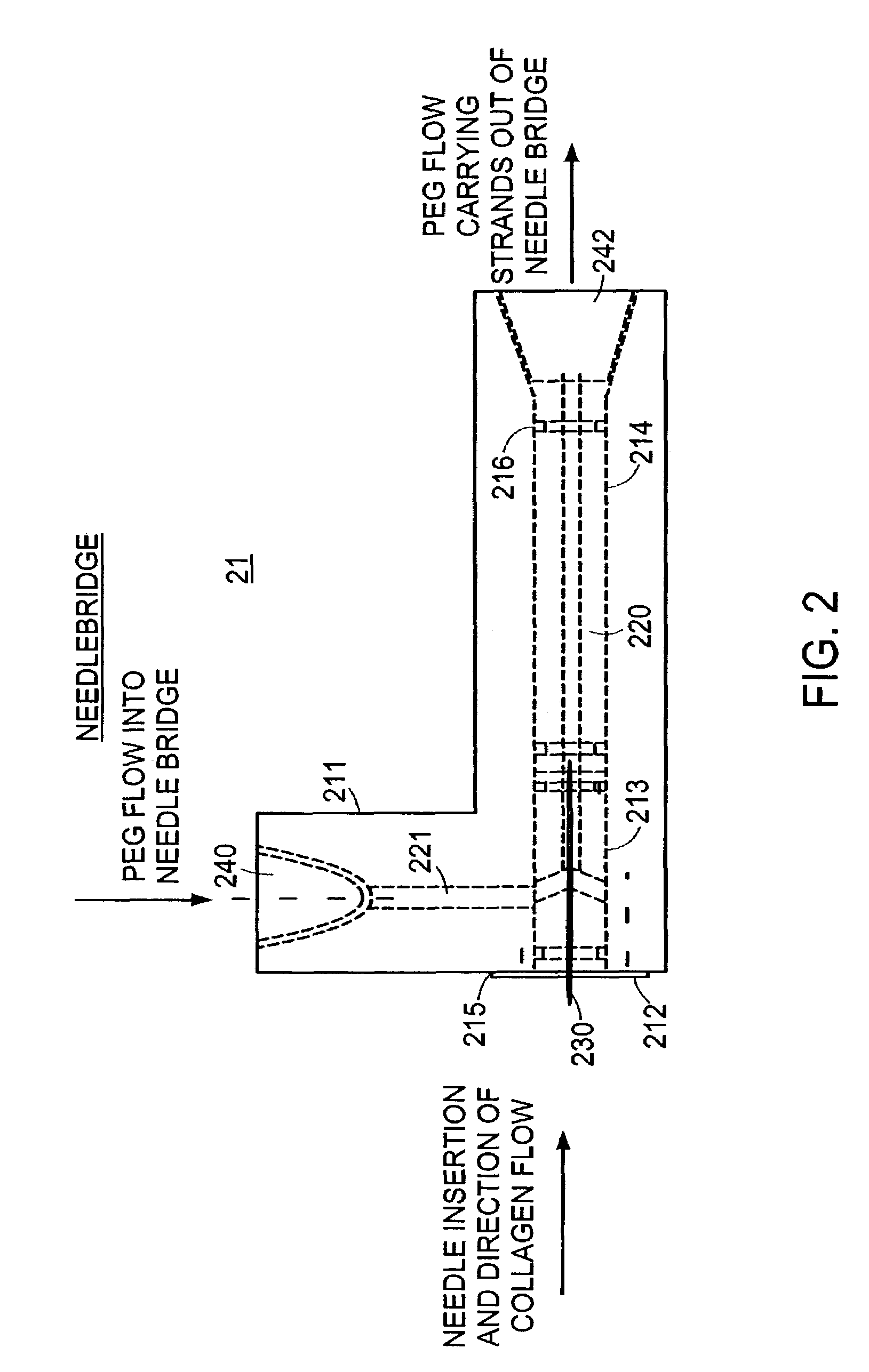Process of making bioengineered collagen fibrils
- Summary
- Abstract
- Description
- Claims
- Application Information
AI Technical Summary
Benefits of technology
Problems solved by technology
Method used
Image
Examples
example 1
Bioengineered Collagen Fibers (ECF) Made From Collagen Solutions
[0052]This study was carried out to demonstrate the flexibility of the production method in that it is capable of producing the collagenous strand formulations from numerous different types of collagen solutions. The one step extrusion production method described in the preferred embodiment of the manufacturing apparatus described above with 20% PEG (MW 8000) at 700 mOsm as the coagulation agent was used. In this example the purpose was only to make small batches of the material. In this Example, the apparatus of FIG. 1 employing the bag filter 24, was used to collect and remove the formed collagen strands.
[0053]We have successfully produced collagen strands from the following collagen preparations:
[0054]Telopeptide intact, acid extracted, bovine tendon collagen Type I in 0.05% acetic acid solution at pH 3.5 at the following concentrations: 1 mg / ml, 2 mg / ml, 3 mg / ml, 4 mg / ml, 4.6 mg / ml, 5 mg / ml and 5.5 mg / ml.
[0055]Atelo...
example 2
Bioengineered Collagen Fibers (ECF) Made Using Various Coagulation Agents
[0057]This example demonstrates the flexibility of the production method in that it is capable of producing the collagenous strand formulations using different coagulation buffers. The one step extrusion production method described in the preferred embodiment of the manufacturing apparatus described above using acid extracted collagen in 0.05% acetic acid at pH 3.5. Because the purpose of this study was to make only small batches of the material, the bag filter 24 (shown in FIG. 1), was used to collect and remove formed collagen strands from the system and used to contain the sample as it was concentrated by compressing excess fluid from the sample. Samples of strands were selected from each collagen preparation, measured and examined under light microscopy.
[0058]From this study, collagen strands were produced using the following PEG based coagulation buffers which vary in the molecular weight, the amount of PE...
example 3
Bioengineered Collagen Fibers (ECF) Made in Varying Dimensions
[0060]The collagen strands produced by the one step extrusion production method described above are repeatably produced both within a batch and in comparisons between batches.
[0061]A syringe pump was used to extrude acid extracted collagen at 5.6 mg / ml at a rate of 0.8 ml / min through a 20-gauge needle into a closed PEG stream. The coagulation buffer was polyethylene glycol (PEG) 8000 MW at 20% w / v and 700 mOsm. The PEG flow rate was set at 500 ml / min in ¼″ diameter tubing at the point of collagen extrusion at midstream. Thirteen batches made in this way had strands with lengths and widths of 7.7 mm and 0.64 mm respectively on average. The standard deviations for length and width were 0.35 mm and 0.03 mm respectively.
[0062]Long thin strands can be produced by using a 25 gauge needle instead of a 20 gauge needle and modifying the collagen and PEG flow rates. The following Table 2 demonstrates a number of different formulati...
PUM
| Property | Measurement | Unit |
|---|---|---|
| Fraction | aaaaa | aaaaa |
| Fraction | aaaaa | aaaaa |
| Fraction | aaaaa | aaaaa |
Abstract
Description
Claims
Application Information
 Login to View More
Login to View More - R&D
- Intellectual Property
- Life Sciences
- Materials
- Tech Scout
- Unparalleled Data Quality
- Higher Quality Content
- 60% Fewer Hallucinations
Browse by: Latest US Patents, China's latest patents, Technical Efficacy Thesaurus, Application Domain, Technology Topic, Popular Technical Reports.
© 2025 PatSnap. All rights reserved.Legal|Privacy policy|Modern Slavery Act Transparency Statement|Sitemap|About US| Contact US: help@patsnap.com



